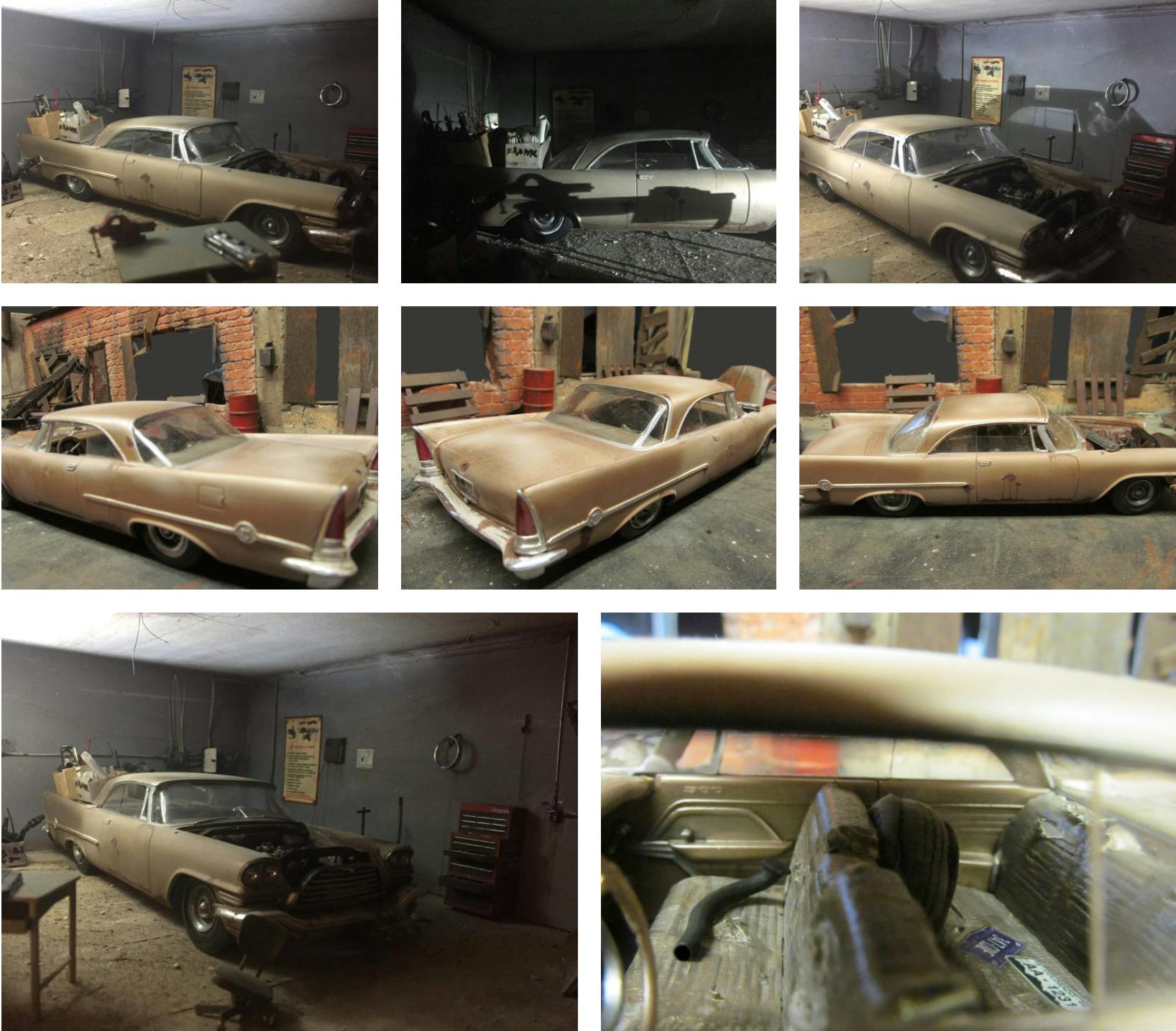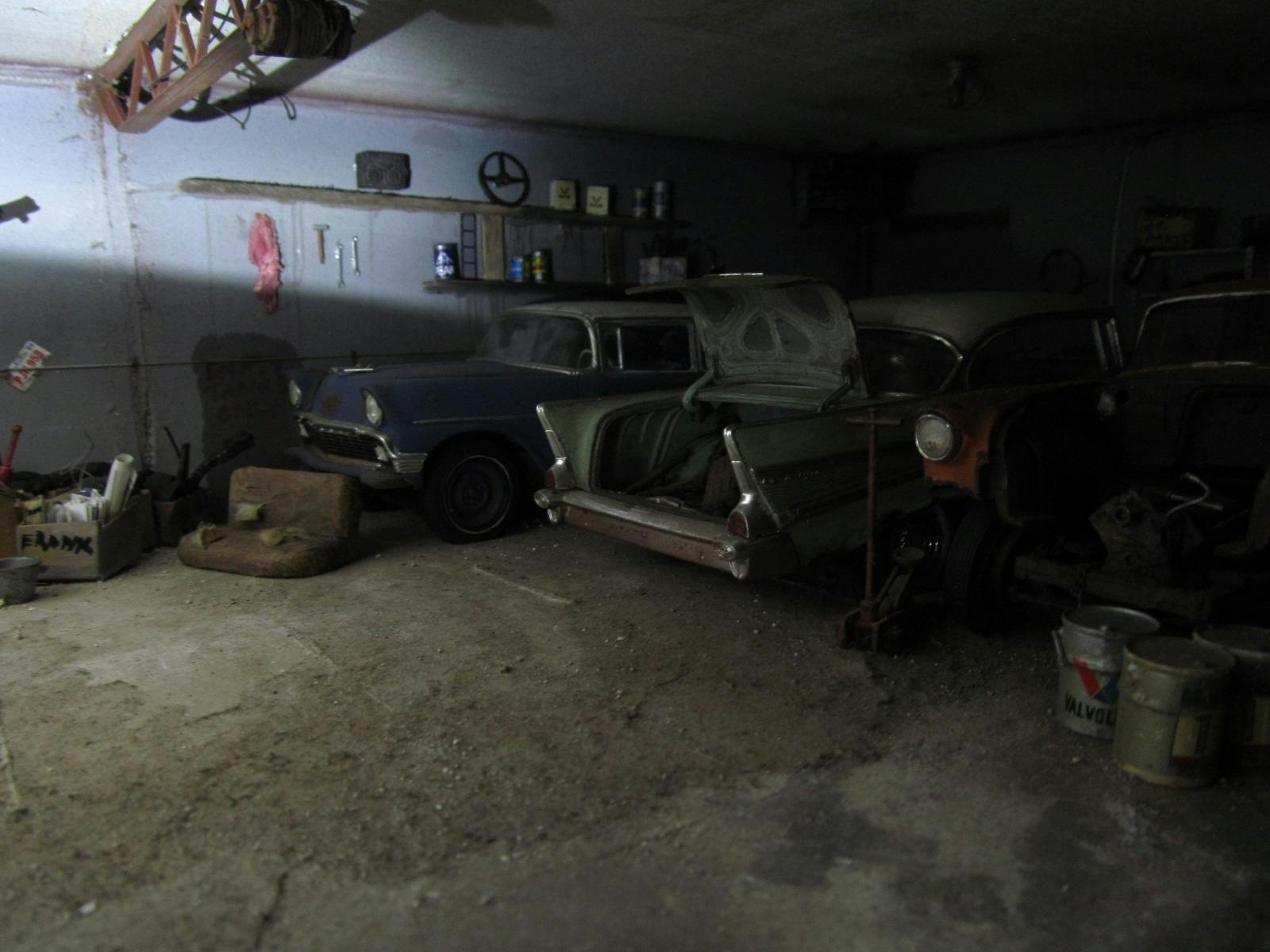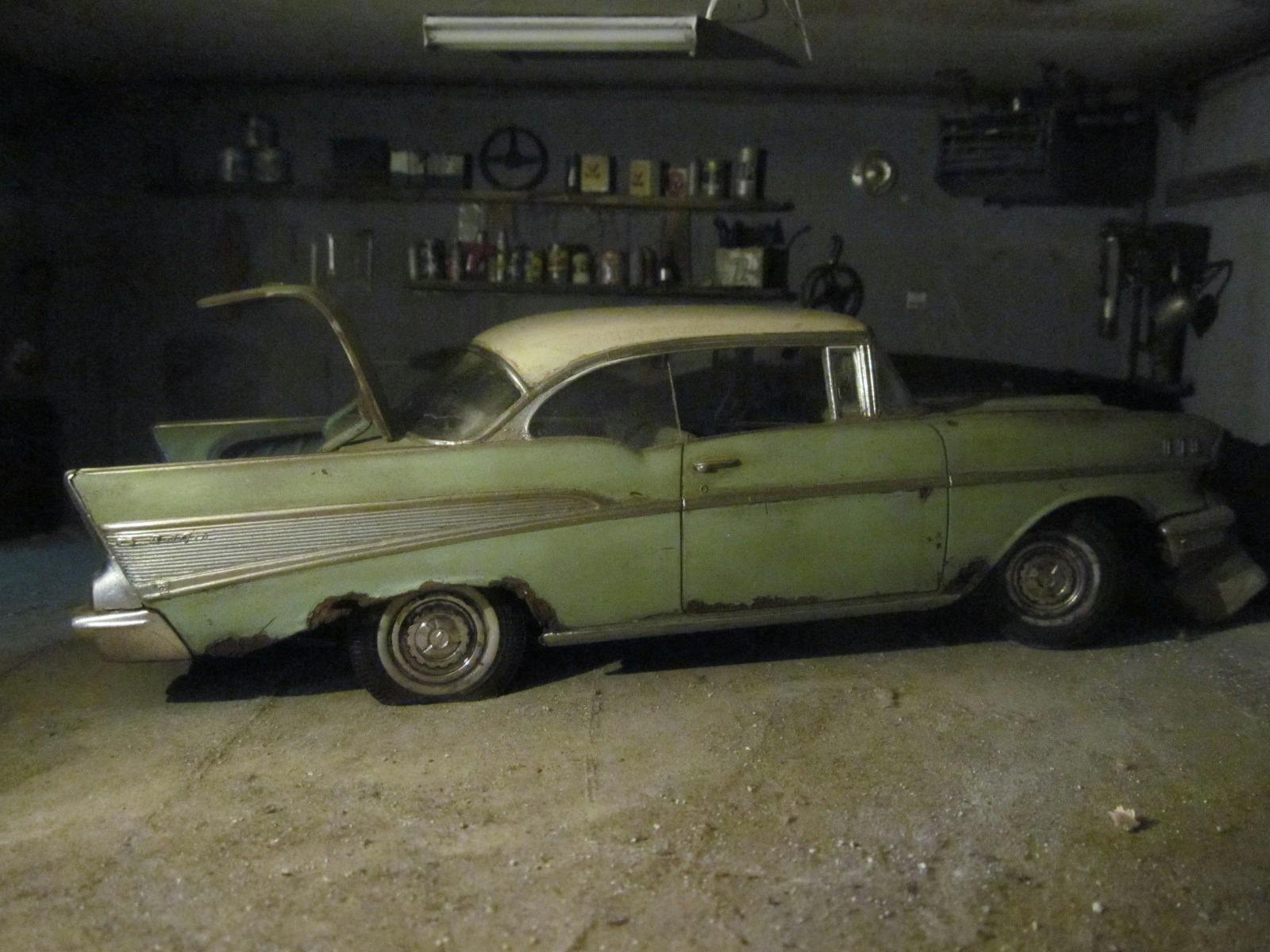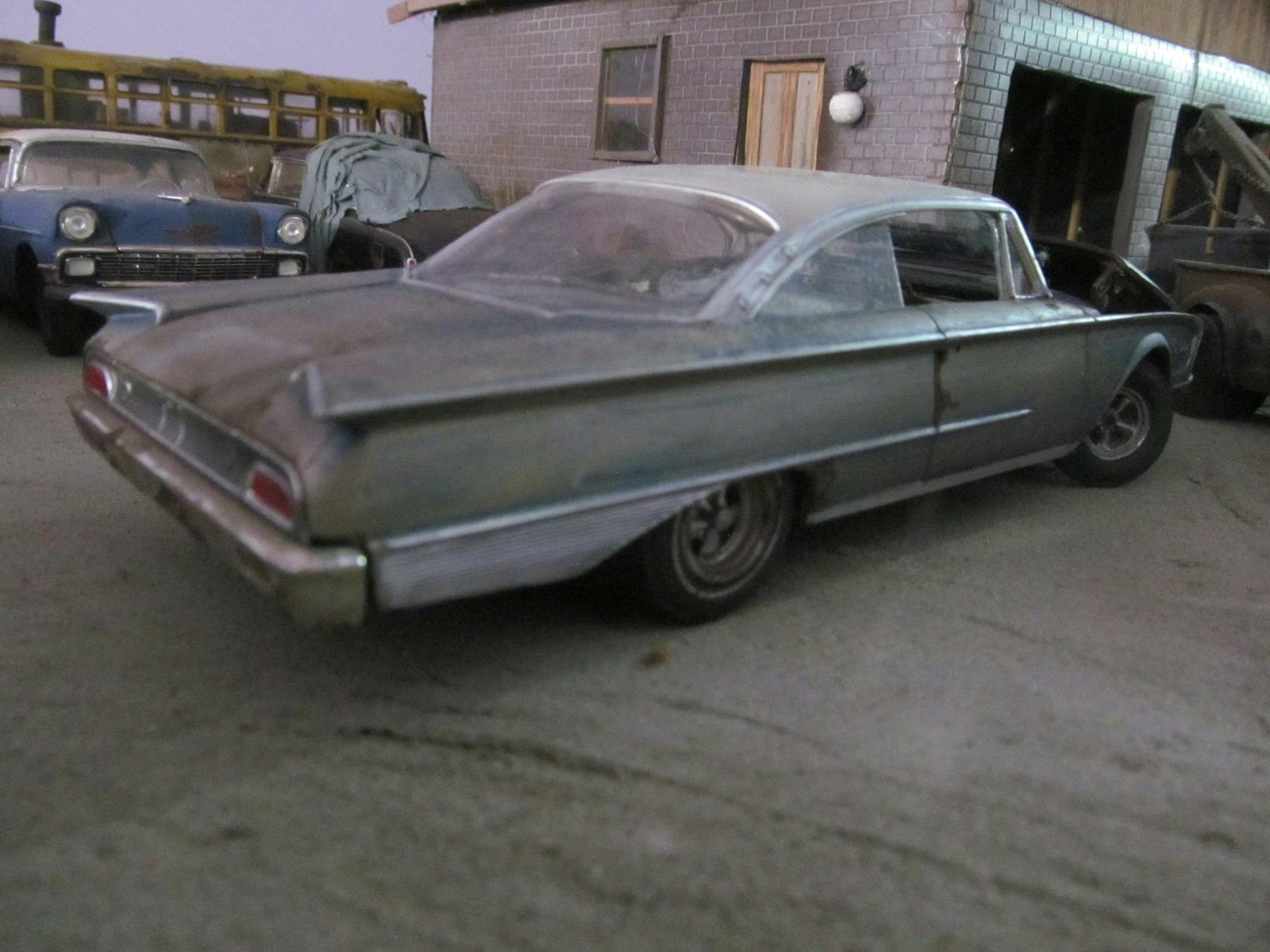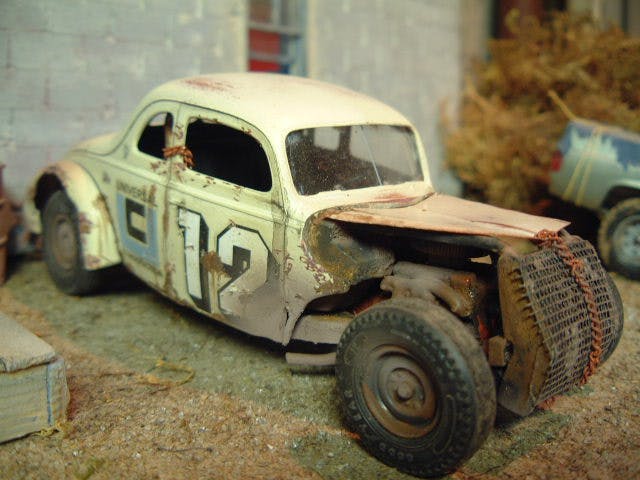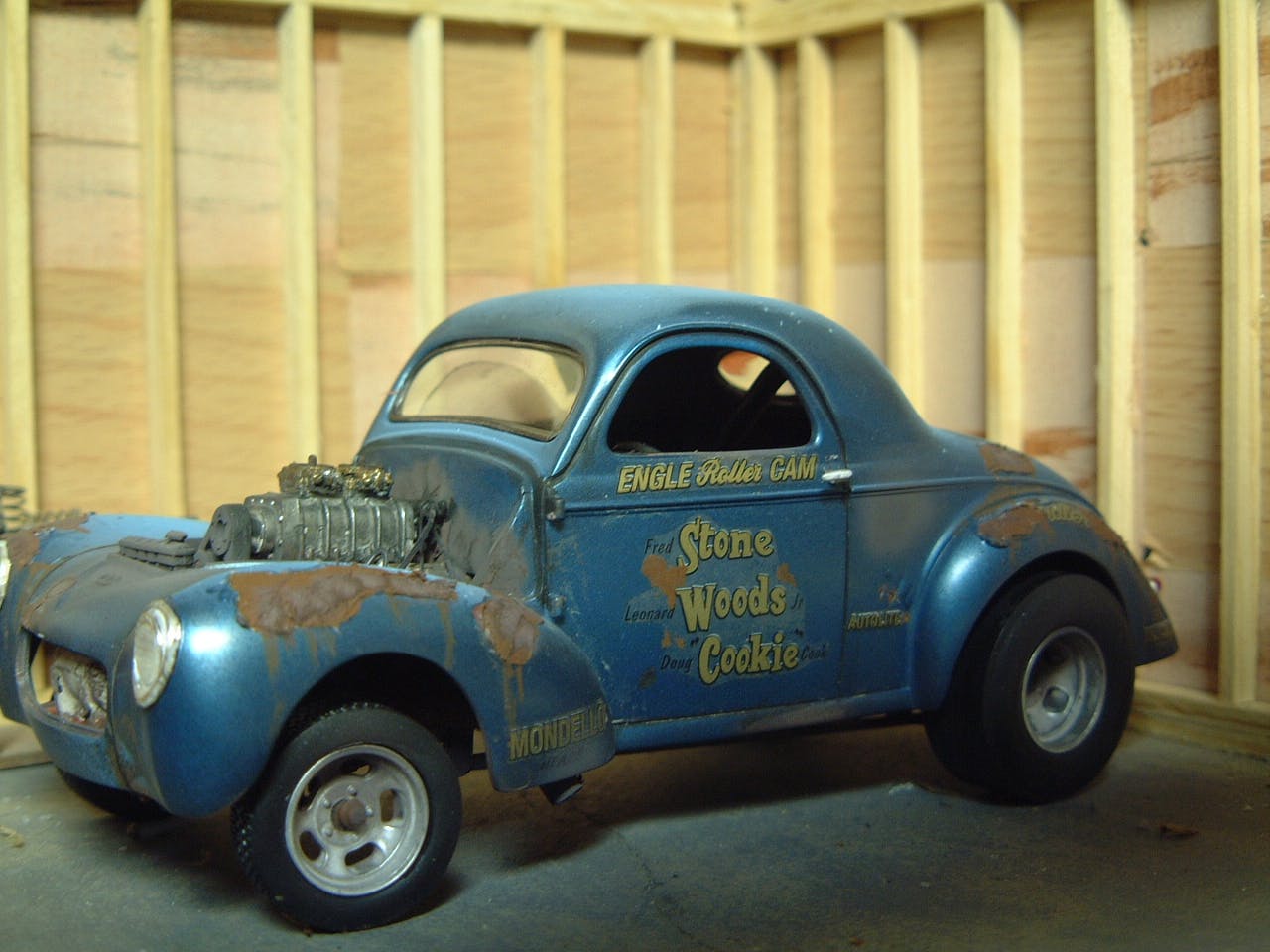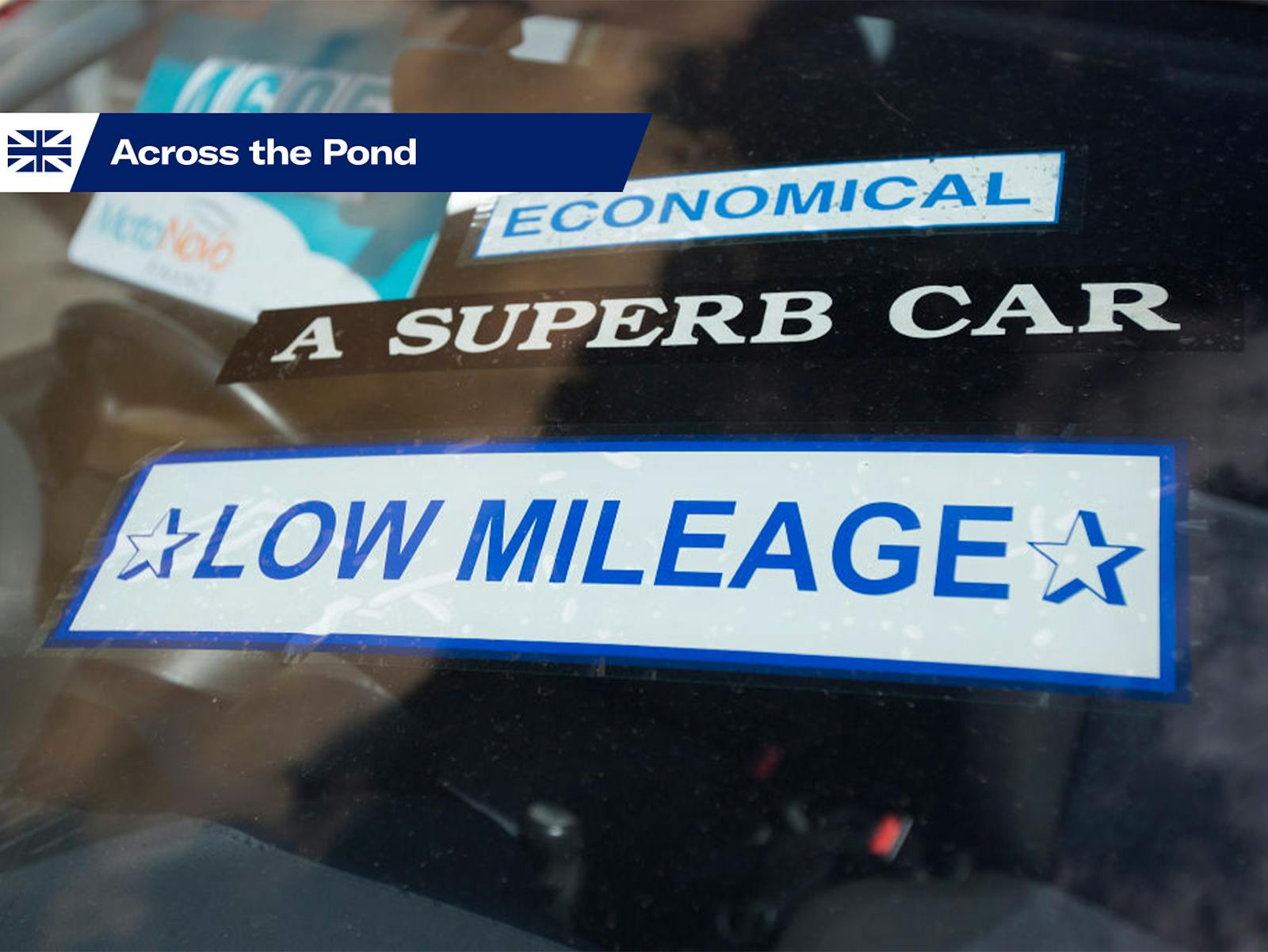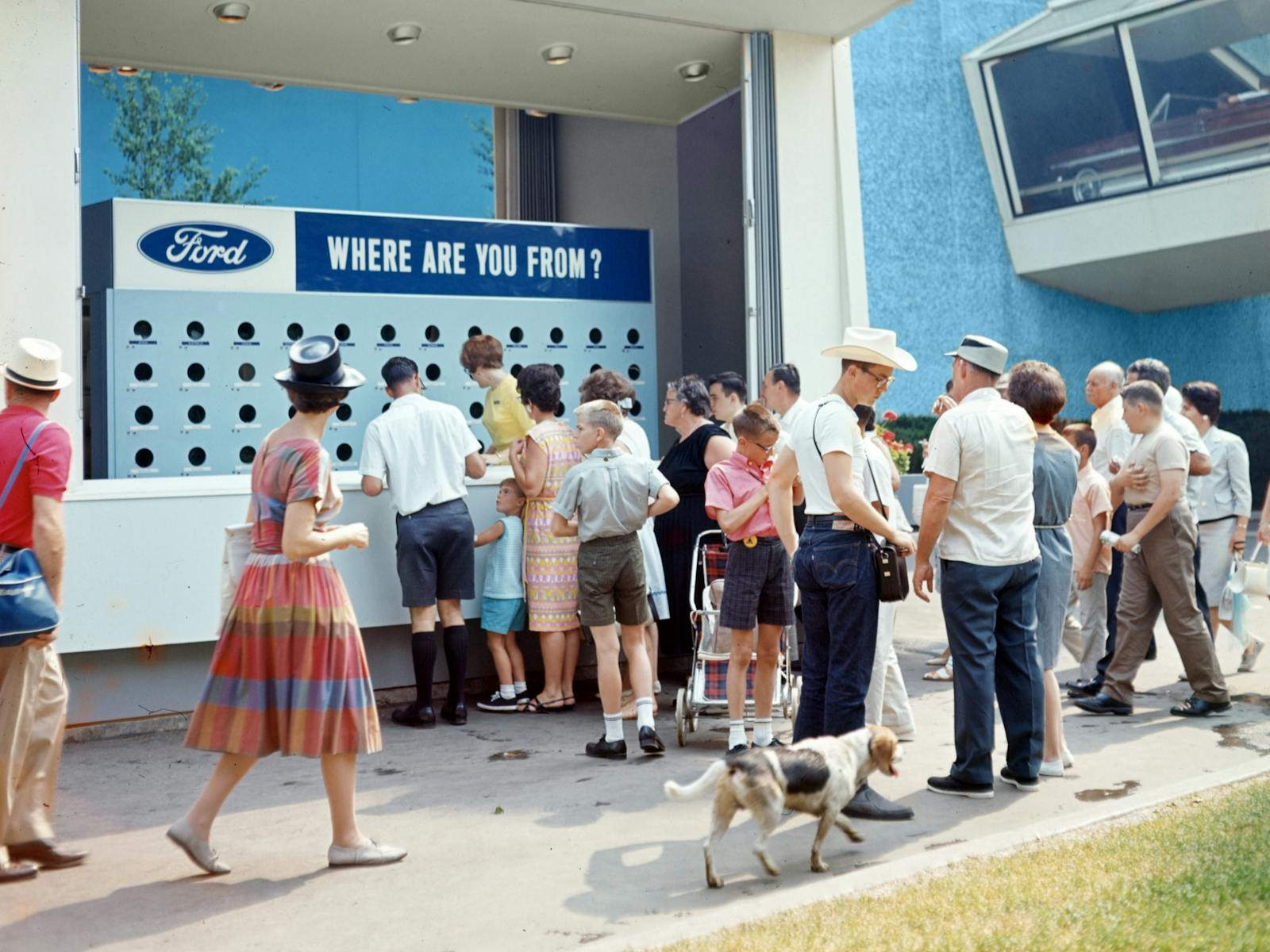Model Citizen: Paint and body man gives “dead” cars their due in 1/25 scale
The entire classic and collector car hobby is built on the concept of preservation and restoration. It’s the reason many readers come to the Historic Vehicle Association website each day. It’s written right into the HVA’s mission:
“Through the collective efforts of enthusiasts, specialists, and professionals, the HVA aims to help ensure that our automotive heritage is more broadly appreciated and carefully preserved for future generations.”
Mike McGee of Windsor, Ontario, has been part of that effort for 25 years, rebuilding and painting the broken and bent bodies of customers’ treasured cars. At the same time, he was intrigued by the idea that many cars never get preserved or saved. What happens to the damaged or inoperable vehicles stashed away in dark, forgotten garages before they emerge as “barn finds” decades later? Who remembers the cars cast aside after a crash, catastrophic failure or that just are not worth the cost of fixing?
McGee, who had been an avid model builder since childhood, has been telling and selling those stories for two decades in the form of custom-built, one-of-a-kind 1/25-scale plastic models. They’ve certainly struck a nerve; he’s sold about 400 over the past 20 years, many to collectors who have bought multiple models from him.
“They trigger peoples’ emotions and memories,” McGee says.
Full circle

McGee’s professional work spawned a new twist on his model-building: if a kit for a customer’s car was available, he’d buy it and custom-build it the way the car looked when it entered his shop. For some, it took a lot of work to recreate damage or years of wear and tear. He’d give the “before” models to customers when they picked up finished cars.
“They’d get the biggest kick out of it,” he says.
McGee also built models of his own cars, including a ’57 Ford. He mainly starts with AMT 1/25-scale plastic model kits. The only way to get some cars, though—especially sedans and wagons—was to buy more expensive, finished resin models. In either case, the 58-year-old McGee draws on his own experience and memories to detail his models and create their background scenes.
“As a teen, I worked in scrapyards,” he says. “As a restorer, I combed those yards for parts, so I was very familiar with how these cars ended up, and what they looked like with parts pulled. I knew how particular cars rusted or got damaged in collisions.”
McGee also built models to keep for himself. As his collection grew, he created a 4×8-foot junkyard, adding cars, scrap motors, tires, and scratch-built parts and backgrounds. Customers who saw the display in his shop encouraged him to sell his work.

“It was just a hobby,” he says. “I didn’t see it as a business.”
But then he decided to try. McGee bought his first computer in 2000 and began putting some of his wrecked, weathered, and “barn find” models on eBay.
“It (took off) like wildfire,” he recalls, sounding somewhat surprised even 20 years later. “The models would have multiple bidders. Most sold for $300–$500.”
McGee’s models drew customers from around the world, and many commissioned special requests. He preferred those, he says, because it meant a guaranteed price versus luck of the auctions.
“It was never all about the money. I have a real passion for doing this.”
Bidding battles
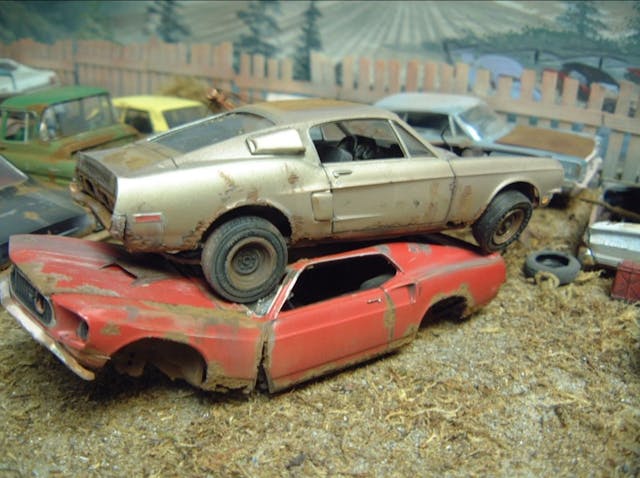
His passion for cast-off cars resonated with many. On eBay, the models sometimes ignited bidding battles among repeat customers. One was the head of a large dental product manufacturer who was building his own large display as a father-son project. Another, the owner of a Cincinnati architecture firm, won everything for weeks while he built his collection.
“It was exciting to watch,” McGee admits.
Renowned bronze sculptor Albert Guibara has been another multiple buyer. He once called McGee to offer some suggestions. One was to charge more for is work, and another was to include some high-end cars, like Ferraris and Porsches.
“He wanted me to know how special what I did was, but I didn’t change my ways over it,” says McGee, who preferred to stick with the cars he knew and grew up with. In appreciation of Guibara, however, he added a classic Ferrari 250 GT SWB to his current junkyard.
“If you have an old Ferrari, even in rough shape, it’s not likely to be in a scrapyard,” he says with a laugh.

The owner of a large dismantler in Hamilton, Ontario, who had been buying many of McGee’s cars, surprised him with an offer to purchase his entire junkyard, which had about 60 models in it. “How much would you want?” he asked. McGee had to think quickly.
“He was a good customer, so I didn’t want to say no, but I also really didn’t want to sell it,” McGee recalls. “I gave him my I-don’t-want-to-sell-it-price: $4000. He just asked how we could arrange delivery.”
McGee decided to deliver the junkyard himself. Conveniently, the setup fit inside his father-in-law’s 1998 Chevy pickup. Coincidentally, McGee and his wife, Brenda, began their four-hour journey on the day of the 2003 Northeast blackout, not realizing that what they thought was a local power outage extended far beyond. They encountered other setbacks but made it to the buyer’s scrapyard, where all the employees were there to greet them.
Back home, McGee began assembling another junkyard with about 40 cars, which he would keep for himself.
TV cars and burned-out Pintos
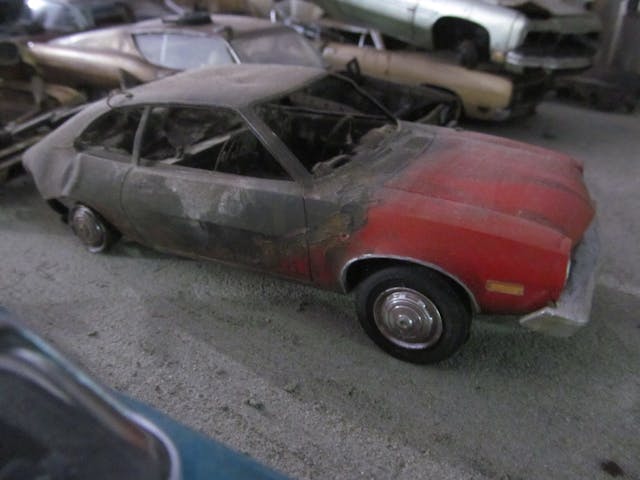
After selling his models on eBay for about six years, McGee felt a bit burned out with the auctions. He took a break but found sales were not as brisk when he returned. He began selling the models at car shows, where he says they always drew a crowd.
“I was amazed at how many people would hover around my table. They’d take pictures and tell me stories of their similar cars.”
McGee learned WordPress and built a website (125scale.com) to showcase his work. By 2019, the site was getting 5000 visitors a month and earning additional money through Google AdSense. Since COVID-19, the monthly count has gone up to about 7500.
Visitors to the site will find several distinct themes among McGee’s models, including total wrecks, old tow trucks, barn finds, and retired drag-race gassers that look hopeful for another shot down the quarter-mile. Among his most popular models is the “General Lee” 1969 Dodge Charger from the Dukes of Hazzard 1980s TV show, which McGee builds as the stunt cars sacrificed for the action scenes. He’s sold about 12, all slightly different from each other.

“Dukes of Hazzard fans had everything but that,” he says. “I was punching the engine and tranny through the cowl, bending the front end way up, and putting a barn board through the windshield.”
McGee has sometimes applied a touch of the macabre to his models. His Ford Pintos, burned after rear-end collisions, recall a dark chapter in manufacturer negligence. Some of his model scenes, he concedes, might have gone too far for some people, including wrecks with bodies sprawled across the windshield and the Bonnie & Clyde death car with bullet-riddled bodies in the front seat.
Bringing life to “dead” cars
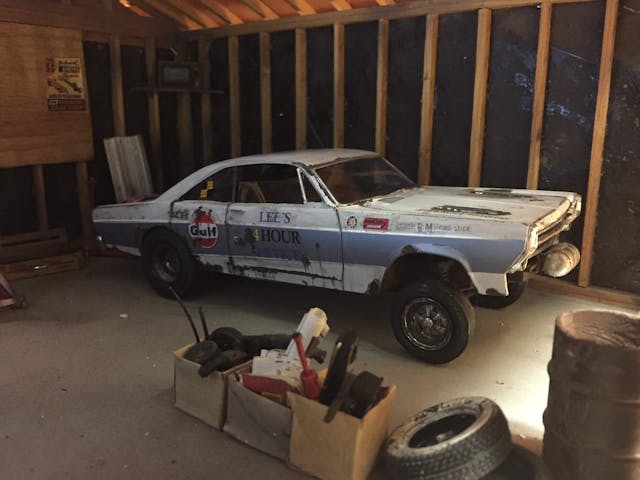
In addition to his scratch-built junkyard dioramas, McGee has made garages, alleys, derelict buildings, and other settings for his models. In his garages, he adds details such as musty, old cardboard boxes.
“It’s an added challenge to build a scene around the look of the car, so I generally finish the car first, then decide its final resting place. Does it look like a barn find? Or is it something that was left outside?”
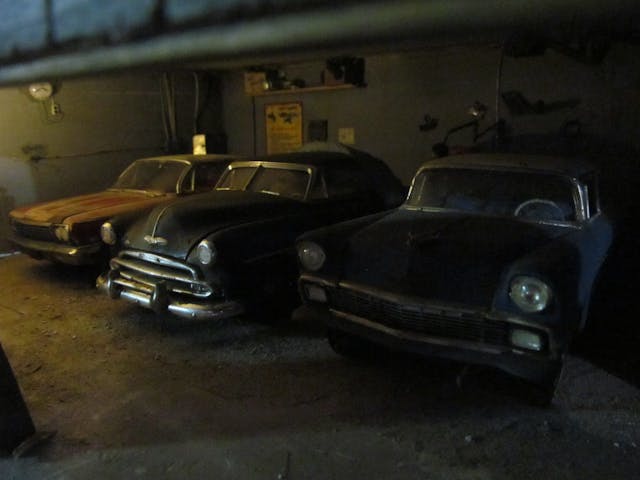
Although McGee starts with kits, achieving his vision for each vehicle always requires scratch-building some parts. For picked-apart scrapyard cars, he creates the inner details of the car that are exposed when parts such as lights, grilles, and bumpers are removed. To make a headlight bucket, for example, he reverses a baby moon hubcap and weathers it. Where multiple parts of a real car might be molded as one piece on a model, he’ll cut the area apart and reassemble it to show the gaps.
McGee recently added a 3D printer to his toolset, allowing him to print objects he previously had to scratch-build. To make a tow truck out of a 1950 Chevy 3100 truck kit, for example, he 3D-printed the wheels and made the boom from the frame of an old big-rig model he had laying around in a parts box. He made the cradle from electrical tape and cut a hollow model tire to make the front push bumper.

Building gassers also takes some improvisation. “There’s a lot of butchery involved,” he says. “Gassers were built to be push-started to keep them light, so they had push bars on the back. I make a push bar and bang it up, because that’s what happened in racing. Then, I add rust.”
McGee devised his own methods and materials for adding weathering effects to models. Rust is the real thing, scraped from junked cars. He dabs on a latex base coat to an area and sprinkles rust dust on top of that. When it’s dry, he brushes it off and covers it with a paint-flattening agent, which seals the rust and dulls the chrome on bumpers and trim. He also mixes the flattener with the color to “kill the paint down.”
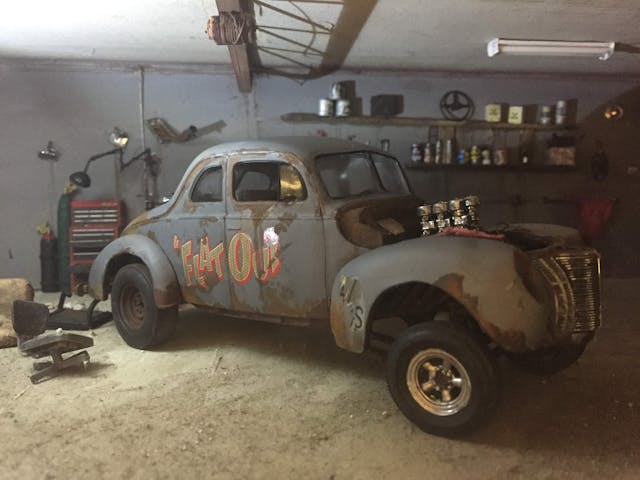
In addition to knowledge of how cars crush and break in collisions, making wrecks from plastic models takes a deft touch. To crumple body panels, McGee uses a hot-air welder that’s commonly used by body shops to repair plastic bumper covers. The tool concentrates superheated compressed air onto a small area, allowing him to soften and manipulate the plastic.
Getting down to details

To make torn upholstery and vinyl tops, McGee rubs two-inch wide masking tape into the model’s molded seats and then paints over everything. When the paint dries, he tears into the tape and adds bits of stuffing coming “out” of the seats.
He also uses the 3D printer to make objects that one might find in junked cars. “There’s randomness with the things people have stuffed into them,” he says. “Now I can just print what I want.”
The lure of making a quick buck on eBay has attracted imitators selling their own “junked” models and dioramas. McGee says most were easy to spot for their lack of realistic details.

“Model cars are stiff, so if you put one on top of the other, you have to pull down the top car’s suspension and wheels, because that’s what gravity does. The people that copy me would miss those details.”
McGee admits he has made some mistakes, like adding rust to the bed of a 1957 Chevy Cameo pickup. “I didn’t realize it was supposed to be fiberglass,” he says. “People corrected me pretty quickly on that.”
Lights, camera, inaction
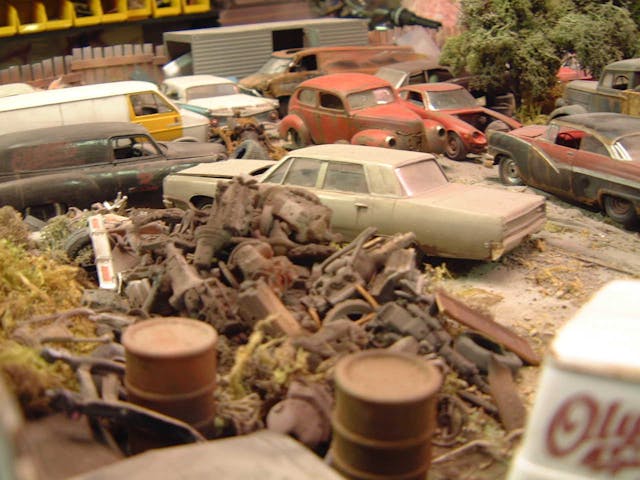
McGee, who does not have a background in photography, says he’s been surprised by the compliments he’s received for his photos of the models. His equipment is modest; he started with a $150 Olympus camera and now uses a $300 Canon.
“I don’t do anything special with lighting or photography,” he says. “I just display the models the best way I can. I try to take pictures as if I’m the size of the cars. I get down really low. I know where my eyes would see over the top of the car. I might take 50 shots of one side of a car and not use any and then start over again. I know the right shot when I get it.”
It is a necessity of the $25 billion auto recycling industry that millions of old and not-so-old cars get scrapped, shredded, and melted down every year for the material to be reused. Through his models, McGee helps us to remember how some of those cars lived … and died.

